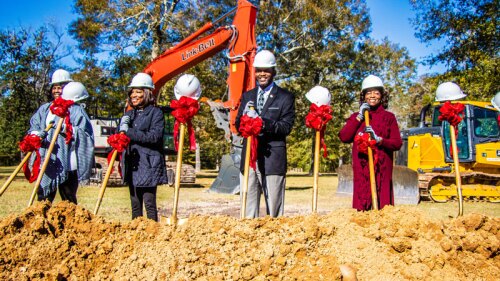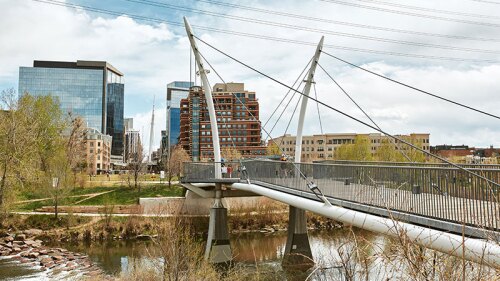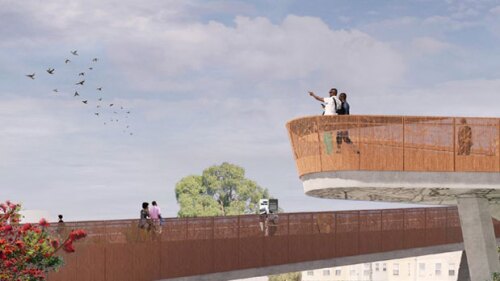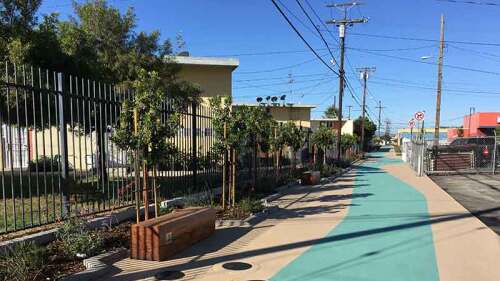A land-based approach to solving America’s economic crisis would enable municipalities to acquire vacant properties to develop into parks and green space that could provide a use for excess commercial space and empty housing units.
Today, America faces a problem of excess commercial space and 19 million vacant housing units that is burdening the national economy. These nonproductive real estate assets are dragging down neighborhoods, local businesses, and responsible homeowners and are resulting in real costs as well as opportunity costs (i.e., loss of tax revenues, or a decline in surrounding land values). To date, the nation’s economic recovery strategy has been driven by financial policy. But as unemployment hovers around 10 percent and underemployment nears 17 percent, a land-based approach to solving America’s economic crisis, driven by the creation and revitalization of parks, is gaining national attention.
City Parks Alliance (CPA), a Washington, D.C.–based national network of urban park and recreation leaders, is developing a federal funding strategy that would relieve banks of their bad assets by converting underused properties into parks and open space. A $1 trillion federal program would enable local
municipalities to acquire vacant properties to develop into parks and green space, and through the demolition of buildings and construction of parks, put hundreds of thousands of people to work. Banks would be able to start lending again to small businesses, and America’s communities would be greener, healthier, and more vibrant, attracting more investment.
Working with the Atlanta-based Georgia Tech Research Institute, CPA is exploring how this program would work in a dozen pilot cities across the United States. The research team, led by Joseph Hughes, chair of Georgia Tech’s School of Civil and Environmental Engineering, has used Atlanta as the model to develop a research methodology. The methodology was triggered by the following question: “Given $5 billion, what could be done in the metro Atlanta region through the purchase of nonproductive commercial real estate assets and conversion of those properties to parks?” Further, what impacts would be realized by such a program?
The recession has had a disproportionate impact on Georgia because its economy was more closely tied to the housing boom than that of most states. The state leads the nation in the number of bank failures, accounting for over 25 percent of the total number; Atlanta was the number-one market for single-family home construction every year from 1998 to 2005, and today is one of the most overbuilt commercial real estate markets in the country. The largest number of job losses have been in the construction and affiliated building services industries, according to the Atlanta Business Chronicle. Georgia is considered in desperate need of public parks and green space, registering in the lowest percentile nationally of green acreage per resident. Yet Atlanta continues to be the center of population growth in the state and the South, with predictions of an additional 2.3 million people moving into the metropolitan area over the next two decades.
To begin to address these questions, a half-day stakeholder symposium was held in Atlanta this past August that brought together municipal leaders, professors, students, research faculty, business leaders, and representatives of the city’s parks and development organizations. Municipal and regional leaders provided insights into local market conditions, current park projects and green-space initiatives, and policy implications associated with a potentially transformative program. From an engineering research perspective, the potential of a $5 billion capital infusion removes barriers and allows stakeholders to truly think “outside the box” and take an integrated systems approach to a complex financial, political, and technical challenge. The stakeholder symposium brought together a myriad of interests and new collaborative partnerships were forged to address the economic development and employment issues facing Georgia.
Faculty and students from Georgia Tech conducted a “50,000-foot” review of large-scale infrastructure projects, including the Eisenhower Interstate System and the Erie Canal, and global economic crises, including the Japanese financial decline and U.S. recessions. This review provided a framework for
understanding the potential impacts of multibillion-dollar economic and infrastructure investment programs and the transformation of cities and countries during and following severe economic downturns.
Data collection activities for the metro Atlanta evaluation included the following:
- reviewing municipal park and regional data from local, state, and national organizations;
- conducting interviews with developers, city planners, project managers, architects, engineers, construction industry CEOs, park directors and supporters (public and nonprofit), and economists; and
- reviewing commercial real estate databases, housing inventory statistics, unemployment statistics, and state and federal financial presentations and papers.
Of the conceptual budget of $5 billion, asset acquisition represented 60 percent ($3 billion), demolition 5 percent ($250 million), design and construction 15 percent ($750 million), and operations and maintenance 20 percent ($1 billion). Existing infrastructure projects (underway and proposed) were leveraged; for example, the Atlanta Beltline project acquired 325 acres (131.5 ha) of proposed park space, and the proposed redfields-togreenfields project would increase the park acreage by an additional 325 acres (131.5 ha) along the Beltline. The potential impacts of a $5 billion capital infusion would be the acquisition of an estimated 2,850 acres (1,153 ha) of park space at current listed market prices; 50 percent of the land outside of the I-285 Perimeter would be removed from the market to create nearly 13,000 acres (5,263 ha) of green space. Tens of thousands of new jobs would be created in addition to tens of thousands of temporary construction jobs.
An important aspect of the research was to evaluate models for parks that would promote economic development, create jobs, and serve as catalysts for sustained revenue generation for a self-supporting park system. Studies have indicated that a well-maintained park system provides quantifiable positive economic impacts to surrounding land values and communities, in addition to health and environmental benefits. Due to the current surplus of office and retail space in the United States and a fundamental shift to Internet purchase transactions, developers and planners are reconsidering practical means to reduce the supply and return these properties to beneficial use. The redfields-to-greenfields option could be a potentially viable solution for cities throughout the nation.
Based on the initial evaluation of Atlanta, CPA and Georgia Tech are conducting a cursory review of six to 12 additional cities, including Philadelphia; Denver; Wilmington, Delaware; Miami; and Cleveland, to determine the feasibility of establishing a nationwide redfields-to-greenfields program. This evaluation is being conducted with university partners and city/local parks organizations. The outcome of this effort will be a redfieldsto-greenfields conceptual model for revitalizing major metropolitan areas, creating new jobs, and promoting smart growth economic development.
Metropolitan economies, collectively, are the primary providers of jobs and the driver of the national economy, and parks are one of the most valuable assets a municipality may have. If cities are to be environmentally, economically, and socially successful places, they need to have the support of an exemplary public realm. Preeminent among these public spaces are parks, which can play a major role in economic development, in the reduction of climate change impacts, and in the fostering of a healthier populace.




